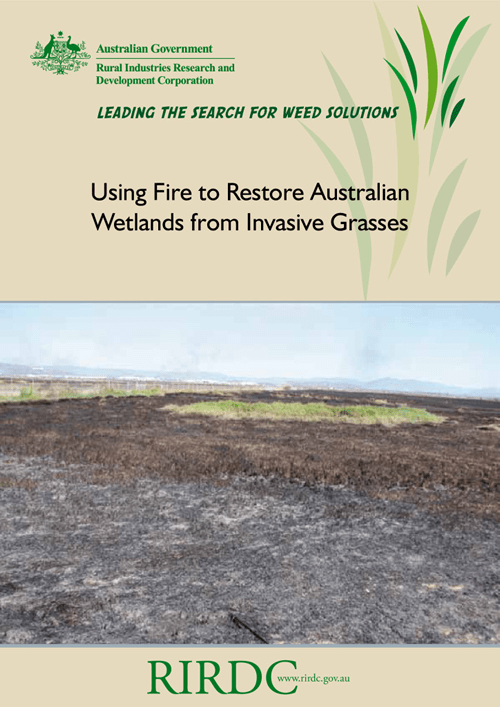Northern Australian wetlands are subject to invasion by various naturalised pasture species. Prominent among them is para grass (Urochloa mutica), which often dominates the vegetation of riparian areas and seasonally inundated wetlands in the tropics and subtropics.
Recent research has demonstrated that burning in the mid– to late–dry season can create ‘windows’ in space and time when the above-ground biomass of para grass is reduced and this situation can be exploited by native plant species. The structural and compositional changes have major flow-on effects for native fauna of wetlands, especially water birds. Fire thus shows promise as a tool for restoring wetlands that have been degraded by the invasion of para grass.
A relationship that is important in connection with the restoration of seasonally inundated wetlands is that between the timing of fire and the timing and depth of inundation. Burning as late as possible in the dry season maximises the likelihood of post-fire inundation disadvantaging the para grass at a time when its population is recovering from the fire.
This research aimed to test and improve the application of these experimental techniques at the landscape scale. The purpose was to determine the extent to which the interaction between inundation and prescribed burning can be exploited in order to restore wetland structure, function and biodiversity.





